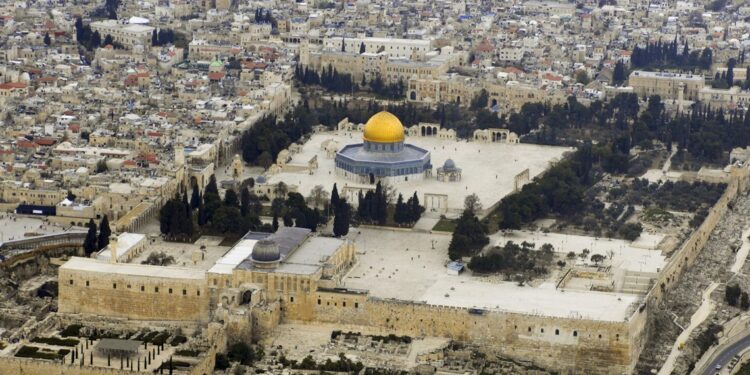Agencies-Gaza post
Jerusalem is the eternal capital of Palestine… know more
The conflict between Jews and the Palestinian people over Jerusalem Al Quds due to a long history of Western imperial intervention in the city, before the establishment of the British Mandate, which began in 1922 after the collapse of the Ottoman Empire at the end of World War One and completed in 1948 by the creation of the Israeli occupation state of Israel.
Earlier to the collapse of the Othman Empire, British censuses reported that Jerusalem’s population was 62,700 consisting of Muslim and Christian Arabs. By the start of the British Mandate, five years after the Balfour Declaration, the number of Jerusalem soared dramatically due to the Israeli Jewish immigration mainly from Central and Eastern European countries to become 164,400 in 1946.
Since the 1948 Arab-Israeli war, the Israelis occupied the western part of Jerusalem and the eastern part of the holy city along with the West Bank became under Jordanian control, including the old walled city containing important Muslim and Christian religious areas.
Then in 1967, Israeli occupation occupied the eastern portion of the city, and its political leaders declared the city Israel’s “eternal, undivided capital.” But the international community, including the United States, continued regarding east Jerusalem as occupied territory and rejected the Israeli decision to settle its occupiers there.
The European Parliament, in March 2012, stated a briefing on Jerusalem, stating that “the year 2011 was recorded as the year of the greatest expansion of Israeli settlements in East Jerusalem since 1967.”
Many Palestinian families have been evicted to the streets in Jerusalem due to the Israeli procedures of hegemony, expulsion, and discrimination.
Fighting the international consensus, on 6 December 2017, US President Donald Trump announced the United States’ recognition of Jerusalem as the capital of the occupation state of Israel and mandated the planning of the relocation of the US Embassy in Israel from Tel Aviv to Jerusalem.
The US administration officially migrated its embassy from Tel Aviv to Jerusalem on 14 May 2018, fulfilling Trump’s promise. The move infuriated Palestinians and sparked international condemnation.
While Israeli Prime Minister Benjamin Netanyahu reported the embassy move marked a “glorious day” that day, and as the US delegation posed for photos, Israeli occupation forces fired live ammunition at unarmed Palestinians verifying against the move and calling for the implementation of their right to return to the houses from which they were violently expelled from in 1948.
More than 52 unarmed Palestinian demonstrators were killed, and over 2,000 were wounded, according to health officials in Gaza, and hospitals called for urgent blood donations.
UN Secretary-General Antonio Guterres expressed worry about “the high number” of unarmed Palestinian protesters, who were killed in Gaza as they opposed the relocation of the US embassy to Jerusalem.
However, one of the European countries banned the 28-nation European Union from issuing a report about the relocation of the US embassy to the holy Palestinian city of Jerusalem, Ireland’s Foreign Minister Simon Coveney said the move “is inflaming already a very tense situation and the relationship between Israelis and Palestinians.” His Dutch counterpart, Stef Blok, said: “We don’t consider it a wise decision to move the embassy.”
In August 2020, to end a debate in Italy over whether Jerusalem is Israel’s capital or not, the Court of Rome’s Human Rights and Immigration reported that “it is the Italian state that does not recognize Jerusalem as the capital of Israel.”






















